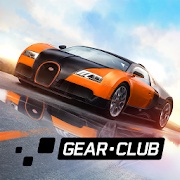
Vehicles may then leave the pre-stage beam, but must remain in the stage beam until the race starts. When the second light beam is broken, the vehicle is "staged", and the stage indicator on the tree is lit. When the first light beam is broken by a vehicle's front tire(s), the vehicle is "pre-staged" (approximately 7 inches (180 mm) from the starting line), and the pre-stage indicator on the tree is lit.

Current NHRA trees, for example, feature one blue light (split into halves), then three amber, one green, and one red.

Modern races are started electronically by a system known as a Christmas tree, which consists of a column of lights for each driver/lane, and two light beam sensors per lane on the track at the starting line. The cars run through a "water box" (formerly a "bleach box", before bleach was replaced by flammable traction compound, which produced spectacular, and dangerous, flame burnouts the hazard led NHRA to mandate use of water in the 1970s ).
DRAG RACING CLUB WARS HACK TOOL DRIVER
Each driver then backs up to and stages at the starting line.īefore each race (commonly known as a pass), each driver is allowed to perform a burnout, which heats the driving tires and lays rubber down at the beginning of the track, improving traction. Don Garlits was the first to do burnouts across the starting line, which is now standard practice. After burnouts, cars would be pushed back by crews this persisted until NHRA required reversing systems in 1980. Push starts to get engines running were necessary until the National Hot Rod Association (NHRA) mandated self-starters in 1976. The history of automobiles and motorcycles being used for drag racing is nearly as long as the history of motorized vehicles themselves, and has taken the form of both illegal street racing and as a regulated motorsport.Ĭamaro at launch, with Altered Vision in the right lane. Electronic timing and speed sensing systems have been used to record race results since the 1960s. The 1⁄ 8 mi (660 ft 201 m) is also popular in some circles. The race follows a short, straight course from a standing start over a measured distance, most commonly 1⁄ 4 mi (1,320 ft 402 m), with a shorter (1,000 ft (305 m)) distance becoming increasingly popular, as it has become the standard for Top Fuel dragsters and funny cars, where some major bracket races and other sanctioning bodies have adopted it as the standard. Note the blinder, to prevent the driver from being distracted by the lights for the other lane.ĭrag racing is a type of motor racing in which automobiles or motorcycles (usually specially prepared for the purpose) compete, usually two at a time, to be first to cross a set finish line. The Christmas tree counting down at SIR, outside Saskatoon, Saskatchewan.


 0 kommentar(er)
0 kommentar(er)
